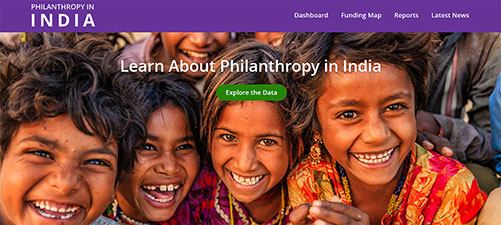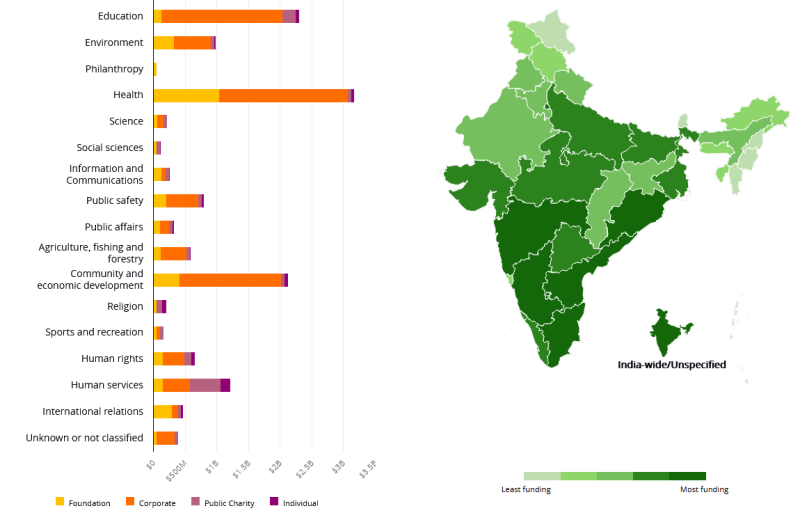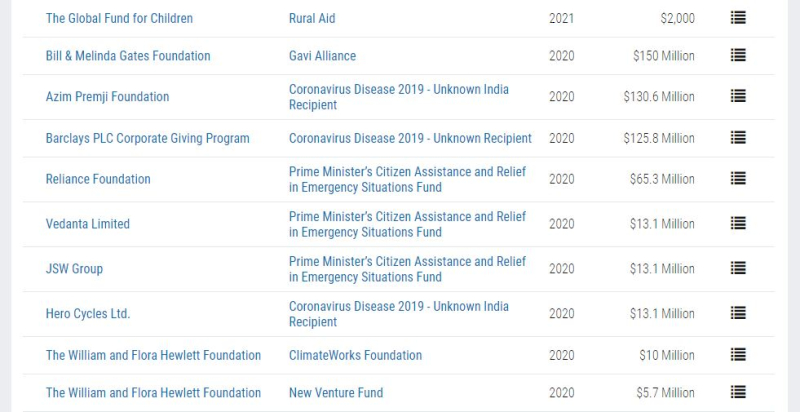Philanthropy is contributing billions to Indian development, but who is counting?

It is an exciting time for philanthropy in India, especially institutional philanthropy. The sector has come a long way since 1892, when the Tata group established one of the first philanthropic trusts in the country, the JN Tata Endowment. More recently, a number of Indian billionaires have joined the Giving Pledge started by Warren Buffett and Bill and Melinda Gates, and a significant number of high-net-worth Indian entrepreneurs have made significant commitments in support of Indian development.
Thanks in part to a booming Indian economy, another significant trend is the emergence of giving by India’s growing middle class. According to some estimates, the Indian economy has created millions of new donors in the last decade. And while many of these donors do their giving through traditional informal channels, a large number have started to adopt more innovative mechanisms for their giving. Retail giving — crowdsourced philanthropic funds from ordinary Indians — is becoming increasingly popular and is helping to support some of the largest NGOs in the country. Corporations also are playing an increasingly important role in supporting the Indian NGO sector. In fact, India is the first country in the world to make corporate giving mandatory, and total spending by Indian companies has increased steadily since the law came into effect, with spending by the top hundred Indian companies exceeding $3 billion over the last several years.
Taking all these sources together, philanthropy today is one of the largest players in the mix of development actors at work in India. But who is counting its contributions?
It’s tempting to think the Indian philanthropic sector is the most data savvy in the world. After all, Indian data and software engineers and programmers compete and innovate at the highest levels. But the country’s philanthropic sector suffers from an acute lack of data availability and transparency. Often contained in their own bubbles, India’s philanthropic actors typically do not know who is doing what and where, who is contributing how much to which causes and organizations, and where their money could have the most impact in terms of complementing government actions. Similarly, international foundations that fund or want to fund programs in India often are only able to see a partial picture of the philanthropic landscape. The lack of philanthropic data results in inefficiency, redundancy, and lost opportunities for collaboration within the Indian development sector and with other development actors outside the sector. As a result, millions of Indians remain beyond the reach of the benefits that philanthropy can bring.
One might think the overall lack of data on Indian philanthropy isn’t a problem when it comes to grants made by international foundations, since under India’s Foreign Contribution Regulations Act (FCRA) grants made by international foundations to Indian NGOs must be reported through the government’s publicly accessible portal. Unfortunately, because of the lack of a data standard, the lion’s share of that data is largely unusable. To make FCRA data useful, one must go through a thorny, time-consuming, and expensive data-massaging process. And even then, a large portion of the data remains hopelessly inadequate for any useful analysis.
Although corporate philanthropy, one of the biggest sources of Indian philanthropy data, clears the bar established by FCRA, it falls short in terms of its usefulness for answering critical questions. The very general project descriptions and broad categorizations provided by most Indian CSR operations fail to provide important details that are essential for improving the efficiency of the Indian development sector — for example: Where and how has the money has been spent? Was the recipient an NGO or another type of organization? What thematic area and geographic location do the recipients operate in? Does the corporation run its own programs or does it outsource them?
So what can we do to address the problem? For starters, we could collect all the data available from multiple sources, clean it up, index it using a common standard and taxonomy, analyze it, and then make it available to all for free on a data visualization platform. And that’s precisely what Candid has done with the Philanthropy in India portal. The portal includes grants made by both Indian foundations and international foundations, high net-worth individuals, corporations, charities, and official donors. What’s more, we’ve analyzed the grants data in an effort to answer some of the fundamental questions people have about Indian philanthropy, such as who is doing what and where, what problems and issues are getting funded, and where gaps exist.

Left: distribution of funding by subject focus; right: geographic focus and density of funding.
The funding map section of the portal provides access to disaggregated grants data so that philanthropic actors can have a better understanding of how their dollars can have greater impact while helping to minimize redundancy and encourage collaboration between different organizations. The portal also provides access to knowledge created by and for the sector as well as the latest updates from the world of Indian philanthropy. In short, Philanthropy in India is a one-of-a-kind tool that addresses some of the data challenges that have slowed the progress of the Indian philanthropic sector.

Of course, the portal has limitations, many of which are directly related to the availability and quality of the data we are able to collect. For example, we have very little data on grants made by Indian foundations, while the number of grants reported in a year can vary widely. As a result, we are unable to run many of the analyses we normally run on grants data, including important trend analyses. In other words, the portal is as good as the data put into it. But as more and better quality data becomes available, the more useful it will be for philanthropic actors in India as well as donors outside India who interested in supporting the Indian NGO sector. That’s why we are encouraging all philanthropic actors in India to share their data with us. Not only because sharing data will improve the usefulness of the portal for them, but also because it will help the NGO sector in India become a better version of itself.







Kate, Digital Communications Manager, Candid says:
A good place to start your search is on Candid's GuideStar. You can search nonprofits by cause.
Christopher Eric Prickett says:
Interested in nonprofit combating the gang stalking phenomenon, which I have been a victim of for 3 years.